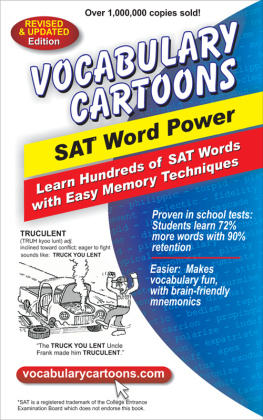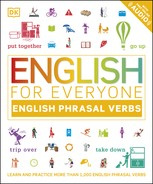2021 G. De Gennaro. All rights reserved.
No part of this book may be reproduced, stored in a retrieval system, or transmitted by any means without the written permission of the author.
AuthorHouse
1663 Liberty Drive
Bloomington, IN 47403
www.authorhouse.com
Phone: 833-262-8899
Because of the dynamic nature of the Internet, any web addresses or links contained in this book may have changed since publication and may no longer be valid. The views expressed in this work are solely those of the author and do not necessarily reflect the views of the publisher, and the publisher hereby disclaims any responsibility for them.
Any people depicted in stock imagery provided by Getty Images are models,
and such images are being used for illustrative purposes only.
Certain stock imagery Getty Images.
ISBN: 978-1-6655-1267-1 (sc)
ISBN: 978-1-6655-1266-4 (e)
Library of Congress Control Number: 2021900381
Published by AuthorHouse 09/08/2021

Workplace Vocabulary for ESL Students
TABLE OF CONTENTS
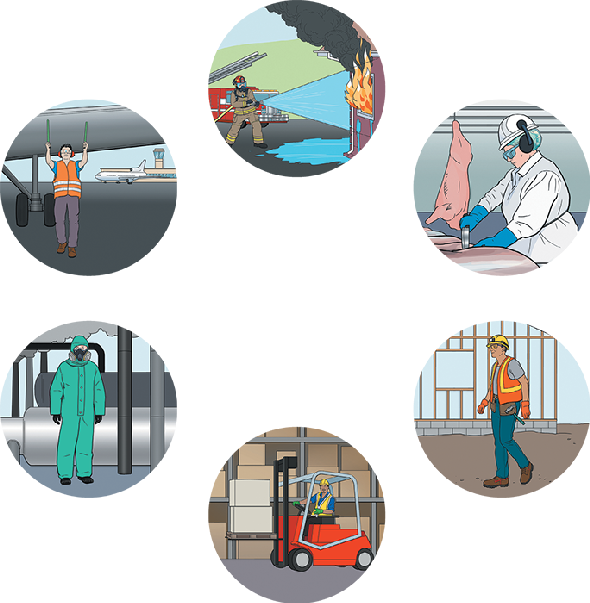
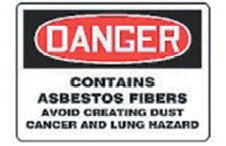
Where do you fin d it?
You can find asbestos at home and at work. Attic insulation and plaster ceilings in older homes have asbestos. Some insulation may fall inside the walls. There may be some asbestos in and around window and door frames, baseboards and around electrical outlets.
You can also find asbestos in the workplace. Building insulation is made from asbestos. Builders also use asbestos for floor and roofing tiles, cement boards, water supply lines and pipes, plaster, fireproof materials and textiles. Many building materials made before 1990 have asbestos. These materials are found in homes, factories, refineries, shipyards, vehicles, boiler rooms, elevators, cooling towers, electrical panels, HVAC duct insulation, vinyl sheets (for walls and floors), textured paints and coatings.
Why is it hazardous? Asbestos is made of tiny fibers. When workers drill, break, remove, saw or replace materials that contain asbestos tiny fibers are released into the air. If they breathe in these fibers they can develop breathing problems or cancer. It becomes a health hazard when workers breathe in asbestos fibers for many months or years.
Safety - People who work with asbestos must be trained and educated to work and stay safe. They must also wear protective clothing and use other safety equipment. When workers are trained, they learn how to recognize, handle and dispose of materials that contain asbestos.
Vocabu lary
attic- insulation plaster baseboards - drill - refineries cooling towers textured paints coatings - duct -equipment |
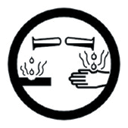
Where do you find them?
There are many corrosive materials and liquids at home. There are corrosive materials in home cleaning products, drain cleaners, oven cleaners, bleach, rust removers, wax strippers and some laundry stain removers.
There are also corrosive materials and liquids in the workplace. Corrosive chemicals are used to manufacture fertilizers, dyes, paints, fabric colors, lubricants, metals, batteries, explosives and industrial cleaners.
Why are they hazardous? Corrosive materials and liquids are dangerous because they damage metals and other building materials. They are also very dangerous to people when they touch the skin and eyes. They are dangerous to the internal organs if they are swallowed. Corrosive liquids can burn, scar or destroy the skin and the internal organs. When workers are allergic to corrosive materials they can get dizzy or nauseous. If corrosive liquids get in the eyes they can burn them. Workers can also become blind if these materials touch their eyes. When workers breathe in vapors from corrosive chemicals they can have serious breathing or lung problems.
Safety - Employers have specific areas at work where corrosive materials are stored. Workers should always follow employer and other safety guidelines. When they work with corrosive materials they should wear protective equipment and clothing to protect their eyes, face, hands, feet and head.
Vocabu lary
Corrosive - rust strippers stain -dyes - scar- dizzy -nauseous damage vapors- stored vapors guidelines lubricants - fertilizers |
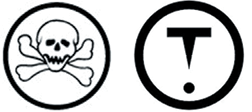
Where do you find them?
There are toxic chemicals and materials at home and at work. They are found in paint, solvents, petroleum products (plastics), pesticides, glues, disinfectants, furniture, textiles, cleaning products and enamels. Chlorine, ammonia, carbon monoxide, asbestos and solvents are all toxic. There are also toxic chemicals in cleaning products for pools, bathrooms and kitchens, heavy duty industrial cleaning products, upholstery foam (inside sofas, armchairs, chairs and beds), cigarette smoke, pesticides, metal cleaners, nail polish, polish remover, car and truck exhaust fumes.
Why are they hazardous? Toxic chemicals are poisonous to people and animals. They are toxic when people breath or swallow them. They can damage the stomach, liver and lungs; people can become very sick or die. Some toxic liquids and gases take away the oxygen from the air so people cant breathe. Workers can become drowsy, nauseous or dizzy if they breathe in toxic chemicals. They can also get cancer from some toxic chemicals. Some people are allergic to toxic materials. Toxic chemicals and materials can also be corrosive and flammable.
Safety - Workers who work with toxic chemicals and materials must be very careful. They must wear special clothing or equipment to protect them. When workers dont use these toxic chemicals they must store them in designated areas to keep everyone safe. All containers, lids, caps, must be secured properly. Toxic chemicals and materials at home must be stored away from children and pets, and away from heat and flames.
Workers who work with toxic chemicals must always follow company, employer and provincial safety guidelines.
Vocabu lary
poisonous - pesticides disinfectants enamels heavy duty upholstery foam- polish exhaust fumes drowsy faint petroleum allergic - flammable- carbon monoxide sanitation - secured |
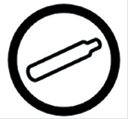
Where do you find them?
At home and at work, you can find compressed gases inside cylinders. There are compressed gases inside propane tanks, lighter fluid canisters, oxygen therapy tanks, gas cylinders, fire extinguishers, hairspray cans and computer and keyboard dusters.
Why are they hazardous? There is a lot of pressure inside cylinders and other containers that have compressed gases. They can burn or explode. Some compressed gases are corrosive. They can burn the skin or other body parts. Some compressed gases can corrode metals; others are toxic. They can take oxygen away from the air and kill people and animals.
Safety - People who work with compressed gases must know the hazards of working with these gases. They should wear personal safety clothing and equipment and handle cylinders with care. They should keep cylinders standing upright and leave valve caps in place. Workers must transport cylinders with hand trucks. They must not drop them or store them near sparks, electricity or flames. Cylinders must be stored more than 20 feet away from cylinders with fuel gas. Workers must not store cylinders inside lockers because cylinders need air. Workers should always follow employer and provincial safety guidelines.
Next page


